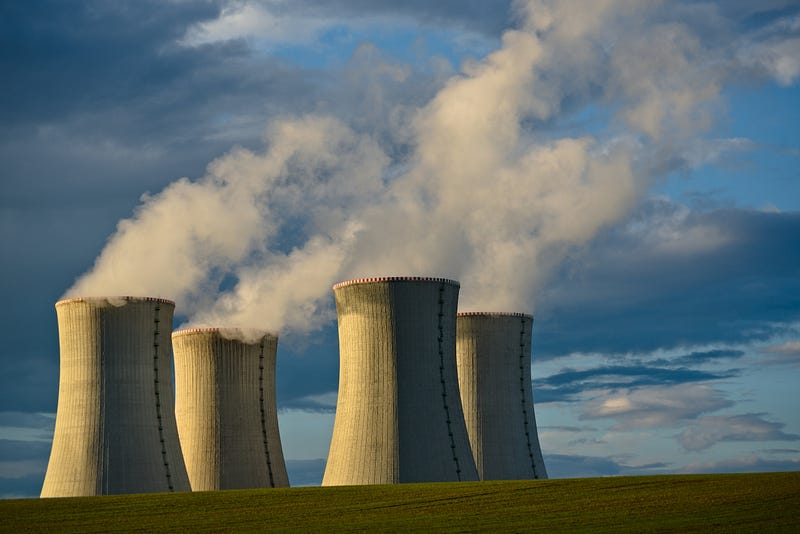Nuclear Energy: A Safer Future Through Innovative Storage Solutions
Written on
The Promise of Nuclear Energy
When we think of nuclear energy, we often envision two extremes: an ultra-clean energy source leading us toward a carbon-neutral future, or a hazardous nightmare reminiscent of fictional tales. In truth, nuclear energy stands as one of the safest and cleanest energy options available today. Despite this, societal fears—fueled by pop culture—have overshadowed its potential, causing us to overlook a technology that could be crucial for our planet's future. However, a breakthrough from Deep Isolation, leveraging oil industry technology, may enhance the safety of nuclear power and challenge skeptics’ views. But can this innovation truly revitalize the nuclear sector?

Section 1.1: Understanding Nuclear Safety
First, let's confront the common misconceptions about nuclear energy. While it may not be a perfect solution, it is undeniably among the safest forms of energy. According to Statistica, a reputable analytics organization, nuclear power results in only 0.03 deaths per 1,000 terawatt hours (TWh) generated. For comparison, solar energy leads to 0.02, wind energy accounts for 0.04, natural gas results in 2.82, biomass causes 4.63, oil contributes 18.43, and coal results in a staggering 24.62 deaths per TWh.
Why is nuclear energy so safe? Its efficiency minimizes the need for extensive mining and processing, thus reducing associated risks. Moreover, nuclear energy produces 100 times less radioactive waste than coal, which contains various radioactive impurities.
Subsection 1.1.1: The Waste Management Challenge
Nuclear waste management has seen significant advancements, with the mortality rate associated with processing waste being nearly negligible. Living near a nuclear waste facility is statistically safer than residing close to a coal power plant.
So, why does nuclear energy have an edge over solar or wind? It has a comparable carbon footprint per kWh as solar, yet it offers a reliable energy source. This reliability is crucial as climate change intensifies, leading to greater dependence on heating and cooling systems. In the face of potential blackouts, nuclear energy provides a stable supply without the need for large grid-scale batteries, which, while less damaging than fossil fuels, still pose environmental concerns.
Section 1.2: The Economic Factors Affecting Nuclear Power
Despite its advantages, governments worldwide are hesitant to embrace nuclear energy, primarily due to rising costs compared to cheaper renewable sources like wind and solar. However, the next generation of nuclear reactors, known as Small Modular Reactors (SMRs), promises to bridge this gap by making nuclear energy more affordable by the decade's end. Yet, concerns about the long-term storage of high-level nuclear waste persist, with governments wary of ensuring its safety for thousands of years.
Chapter 2: Innovations in Nuclear Waste Storage
Deep Isolation aims to tackle the perceived challenges surrounding nuclear waste storage. By utilizing advanced drilling technology originally developed for fossil fuel extraction, they plan to entomb nuclear waste deep within the Earth's mantle.
The first video highlights the future of nuclear power and explores how innovative solutions can address nuclear waste concerns.
Historically, burying nuclear waste was problematic due to the challenge of drilling deep enough to surpass the water table or unstable rock formations. However, Deep Isolation proposes drilling several miles below the surface, allowing for secure storage and sealing of the waste. This method ensures that radioactive materials remain safely encased for millions of years, effectively eliminating the risk of contamination at the surface.
In the second video, Bill Gates discusses his passion for nuclear energy, emphasizing its potential role in a sustainable future.
This innovative approach not only reduces costs associated with waste management but also addresses public fears regarding nuclear safety. To bring this technology to fruition, Deep Isolation has been conducting demonstration tests with non-radioactive materials in Texas since February, achieving significant success.
The Road Ahead for Nuclear Waste Management
To further their mission, Deep Isolation has established The Deep Borehole Demonstration Center, inviting collaboration from governments, utilities, and research organizations interested in this technology. This initiative aims to enhance the safety and readiness of deep borehole disposal methods, with interest from nine countries.
A recent collaboration with Norsk Kjernekraft, a Norwegian company focused on constructing SMRs, is particularly noteworthy. Given that SMRs can produce five times more nuclear waste than traditional reactors, Deep Isolation's technology may prove essential for their operations. CEO Jonny Hesthammer emphasizes the importance of demonstrating practical waste solutions to reassure local communities.
Conclusion: A New Era for Nuclear Energy
This latest test brings Deep Isolation's groundbreaking technology one step closer to reality. Should the nuclear industry adopt this waste disposal method, it could revolutionize nuclear energy, making it safer, more affordable, and potentially restoring public trust in this vital energy source.
Thank you for your support! If you appreciate content like this or want early access to articles, follow me and my project, Planet Earth And Beyond, on www.PlanetEarthAndBeyond.co, Google News, Flipboard, Facebook, Instagram, LinkedIn, and Twitter.
Originally published on Planet Earth & Beyond
Sources: World Nuclear News, Will Lockett, Deep Isolation